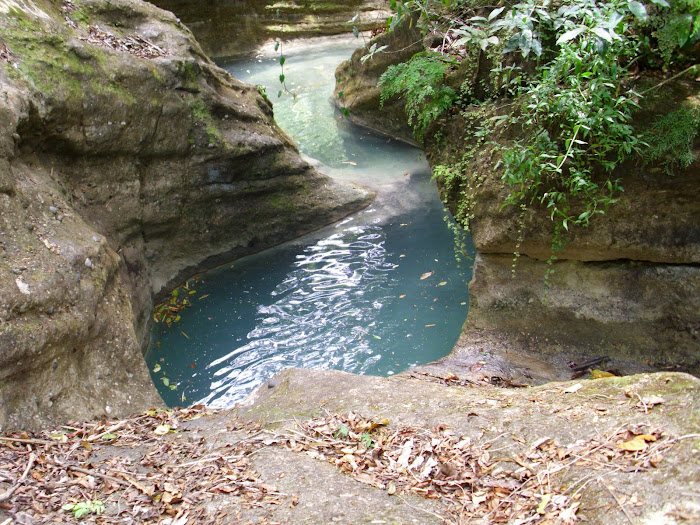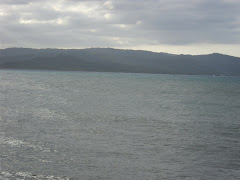The movie Good Deeds is the latest of writer and director Tyler Perry ‘projects’ and could be deemed as the best so far. Since his days back in 1992 of staging plays, there has been much improvement in the quality of his work and Good Deeds, which is now going into its fourth week of showing at the Carib Cinema in Kingston attest to a steady upward mobility in the fine tuning and progress in his movie content and film career.
Over the years, Perry has focused on themes such as the dysfunctional family and family life in general; Meet the Browns, House of Payne (plays) and the Madea Series (films) are high on the family issue, while, Diary of a Mad Black Woman and the Why Should I Get Married sequels focused on marriage and its accompanying problems. Somewhere in that mix he directed Daddy’s Little Girls which was about a father’s fight for his daughters. Except for Daddy’s Little Girls, Perry’s films have not received favourable reviews from critics but they have made healthy sums of money at the box office.
At the Carib Cinema last Tuesday evening, Good Deeds was totally sold out, not an empty seat visible, and the audience, typical at the Carib Theatre, was fully engaged and participated in the movie by voicing aloud their opinions and emotions. The film is about a well to do black man (Tyler Perry) from a well to do family who was at a deciding point in his life. He managed a successful family business inherited from his father and was engaged to a beautiful and self sufficient woman (Gabrielle Union). His life was in a rut but to the spectator it was a ‘good’ rut. He had everything life could offer so why then was he at work until 3:00am most mornings? He meets a woman (Thandie Newton) who works as a night Janitor at his company and who he felt drawn to and ends up helping. The movie is a critique on society’s values; encourages spontaneity; being true to one’s self and one’s desires; helps; siblings rivalry; the effects of the appearance of a “third” party in what could be termed ‘a previously solid relationship’ and questions if love is enough.
Good Deeds is particularly good because it is devoid of the pretentiousness that is present in the Why Did I Get Married sequels and the horrific drag of Madea, present in his other films. Good Deeds is evidence that Perry’s talent as both a writer and a director has matured and that his reputation and financial success are affording him to be able to attract a more auspicious professional set of actors such as Thandie Newton from Beloved who brought real depth and feeling to her role as someone who experiences hard times. The diverse music track is also worth mentioning and brings a lot of texture and feeling to the plot, conveying the necessary emotional dimension at the right time which regulates spectator’s reaction and moods from laughter to tears to anger.
Sunday, March 18, 2012
Wednesday, February 29, 2012
The De-Kay by Kay Ordeen
I didn’t paint my toes and I didn’t groom my hair
I had been sick and under repair
I didn’t mean for them to stare
I just wanted to remain bare
To see if he would still care
Needless to say he failed
But to his own avail;
He says he still loves me
But he left out
“only when you are pre-tty”
Now that I am healed, my emotions are cold
And they refuse to respond to his breathless hold.
He cannot understand what he has done to me
To have ignited such repeal.
Because all I’ve been is polite
For in me there is no spite
And in my body there is no fight
I was not screening him, I’m sure
But he has failed his own tests galore
Now we should go our separate ways
But instead we latch on to these our ending days
Is there hope for us I ask?
As I gently put on back my mask
I get stronger every day
And rebuild my walls from their de-kay.
I had been sick and under repair
I didn’t mean for them to stare
I just wanted to remain bare
To see if he would still care
Needless to say he failed
But to his own avail;
He says he still loves me
But he left out
“only when you are pre-tty”
Now that I am healed, my emotions are cold
And they refuse to respond to his breathless hold.
He cannot understand what he has done to me
To have ignited such repeal.
Because all I’ve been is polite
For in me there is no spite
And in my body there is no fight
I was not screening him, I’m sure
But he has failed his own tests galore
Now we should go our separate ways
But instead we latch on to these our ending days
Is there hope for us I ask?
As I gently put on back my mask
I get stronger every day
And rebuild my walls from their de-kay.
Rock Music Coming Out of Jamaica?
Last Thursday, February 16, 2012, the Institute of Caribbean Studies and Reggae Studies unit at the University of the West Indies, Mona hosted the 15th Annual Bob Marley Lecture. Over the last four years that I have been attending this particular lecture, the various presenters have sought to look at issues emanating from Bob’s life such as: the politics involved in the relationship of the Wailers; Africa; Rastafari and Dancehall. But this year, Professor Mike Alleyne, a UWI PhD in Literatures of English Graduate, colourfully and excitedly exposed a rather captivated audience to “For the Record: Bob Marley’s Island Albums and the 40th Anniversary of Catch A Fire”
The presentation was filled with some lively and vivid slides of album covers and a sharp demonstration in sounds of the different kinds of mixing of Marley’s music over the years. This year, the lecture was actually about Marley’s music, how it was made, mixed and marketed.
The term ‘Island Albums’ refer to those Albums which were executively produced and marketed by Chris Blackwell’s Island Records. Alleyne in his presentation looked at the first such album, Catch a Fire, now in its fortieth year, in relation to all the other Island Albums which came after and compared their successes. Of course he spent quite a bit of time on Catch A Fire showing his audience how the mixing, the album cover and the sequencing of the songs contributed to its success on the overseas market.
It was rather surprising to hear that it was marketed as ‘rock reggae’ over and against ‘raw reggae’ to the international community as Blackwell believed that at that time in 1972 rock music was what appealed to patrons. And so, Catch A Fire was popular and successful beyond Jamaica because of its foreign rock infusions in the mixing of the songs. To demonstrate his point, Alleyne played a piece of the local version of Stir It Up and also the rock version which was marketed abroad. This, much to his audience pleasure and delight. Indeed the sounds are different, but the question is which sound is better and is there an ‘authentic’ sound for reggae music? In order to make the discussion a little more complicated, Alleyne showed Marley in an interview who when asked about the mixing answered “…plenty music get lost in mixing”.
In the cross cultural synthesis of Catch A Fire, even the album cover was rock focused. Alleyne believes that “the cover represents the epitome of album packaging”. And it was not until later on that the cover with Marley smoking the ganja spliff came out. The other Island albums, Survival, Kaya, Rastaman Vibration, Uprising and even Exedous were not as popular as Catch a Fire which was a work of artistic contradictions.
This year’s Bob Marley lecture is the best I have attended so far and undoubtedly, this was due to the high quality of the presentation. The venue, the Neville Hall Lecture Theatre added some amount of essence to the affair over and against the laid back, free flow attitude that one usually gets when events of such cultural importance are held at the Undercroft.
The presentation was filled with some lively and vivid slides of album covers and a sharp demonstration in sounds of the different kinds of mixing of Marley’s music over the years. This year, the lecture was actually about Marley’s music, how it was made, mixed and marketed.
The term ‘Island Albums’ refer to those Albums which were executively produced and marketed by Chris Blackwell’s Island Records. Alleyne in his presentation looked at the first such album, Catch a Fire, now in its fortieth year, in relation to all the other Island Albums which came after and compared their successes. Of course he spent quite a bit of time on Catch A Fire showing his audience how the mixing, the album cover and the sequencing of the songs contributed to its success on the overseas market.
It was rather surprising to hear that it was marketed as ‘rock reggae’ over and against ‘raw reggae’ to the international community as Blackwell believed that at that time in 1972 rock music was what appealed to patrons. And so, Catch A Fire was popular and successful beyond Jamaica because of its foreign rock infusions in the mixing of the songs. To demonstrate his point, Alleyne played a piece of the local version of Stir It Up and also the rock version which was marketed abroad. This, much to his audience pleasure and delight. Indeed the sounds are different, but the question is which sound is better and is there an ‘authentic’ sound for reggae music? In order to make the discussion a little more complicated, Alleyne showed Marley in an interview who when asked about the mixing answered “…plenty music get lost in mixing”.
In the cross cultural synthesis of Catch A Fire, even the album cover was rock focused. Alleyne believes that “the cover represents the epitome of album packaging”. And it was not until later on that the cover with Marley smoking the ganja spliff came out. The other Island albums, Survival, Kaya, Rastaman Vibration, Uprising and even Exedous were not as popular as Catch a Fire which was a work of artistic contradictions.
This year’s Bob Marley lecture is the best I have attended so far and undoubtedly, this was due to the high quality of the presentation. The venue, the Neville Hall Lecture Theatre added some amount of essence to the affair over and against the laid back, free flow attitude that one usually gets when events of such cultural importance are held at the Undercroft.
Subscribe to:
Comments (Atom)




